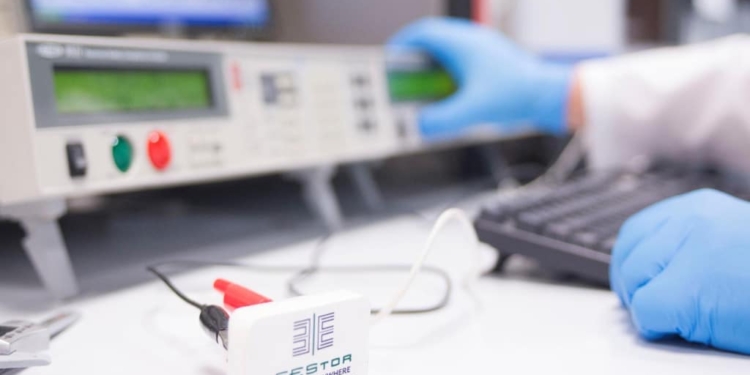Source: EEStor article
EEStor believes its ceramic technology to be longer lasting, more most effective than current technologies.
Toronto, Ontario – April 26, 2018 – EEStor Corporation (TSXV: ESU; “EEStor” or the “Company”) announced today that it published a report detailing the comparative advantages of its ceramic-based dielectric capacitor for the aluminum electrolytic capacitor (AEC) market. The report, prepared by the EEStor and its consultants, directly compares and contrasts its certified solid-state technology against incumbent AEC offerings.
According to Paumanok Publications analyst and EEStor consultant Dennis Zogbi, the main driving factor for the existing capacitor market is cost. Capacitor cost is in turn mainly driven by the volume of material required for capacitors to reach their nominal capacitance and voltage specification. Solid state capacitors manufactured using EEStor’s higher relative permittivity material (“EEStor capacitor”) are expected to require up to 86% less material than incumbent AECs, thereby enabling the EEStor technology to potentially disrupt the multi-billion dollar market by delivering lower cost, capacitors.
Additionally, the ceramic-based dielectric material offered by EEStor is expected to allow the production of capacitors that dramatically extend the 1,000 to 10,000-hour life expectancy typically offered by AECs to decades, further increasing the expected pricing advantage of the EEStor capacitor, enabling the EEStor technology to potentially disrupt the multi-billion-dollar market by delivering lower cost, more efficient, longer lasting ceramic-based capacitors.
In 2018, the AEC market is expected to reach $4.6 billion (USD) globally1 and grow to $5.5 billion (USD) by 2022 2. AEC capacitors are utilized in multiple industries including alternative energy, lighting, telecommunications, automotive, military, medical and consumer electronics. AECs account for 6.5% of all capacitor shipments in terms of volume, but a full 22% of the global capacitor market in terms of U.S. dollar value.1
Ian Clifford, EEStor founder and CEO stated, “We are very pleased to publish the first in a series of market driven reports that clearly delineate the significant market potential for our technology.”
The full report and supporting documentation is available at www.eestorcorp.com
About EEStor
EEStor is a developer of high energy density solid-state capacitor technology utilizing the company’s patented Composition Modified Barium Titanate (CMBT) material. The company is focused on licensing opportunities for its technology across a broad spectrum of industries and applications.































